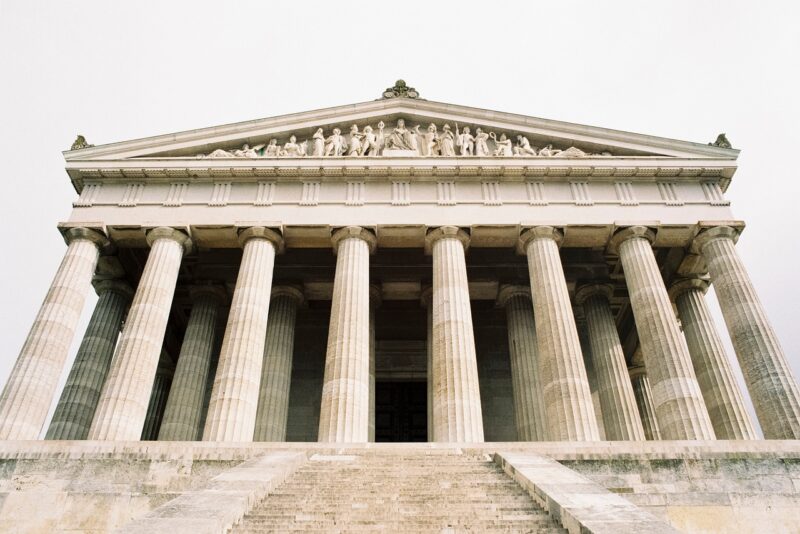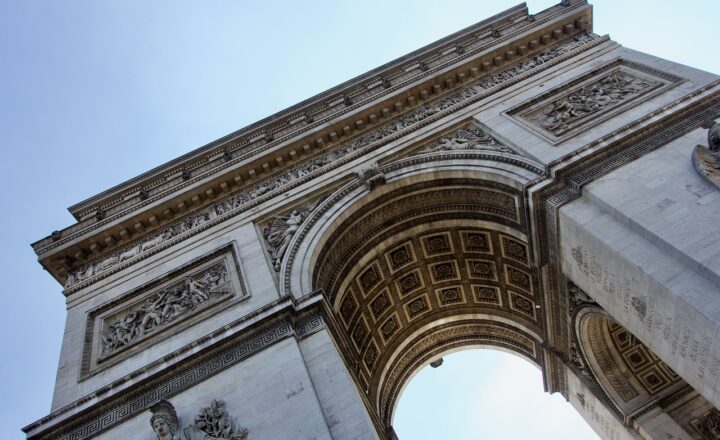
Buildings are often seen as mere structures, but many of the world’s most iconic edifices are steeped in unexpectedly rich histories that can tell us about the culture, art, politics, and even the daily lives of the people they housed or represented. Join us as we explore the fascinating origins, unanticipated discoveries, and the stories that might surprise you behind some of the most famous architectural marvels of our time.
1. The Eiffel Tower: From Criticism to Icon
Originally designed as a temporary structure for the 1889 Exposition Universelle in Paris, the Eiffel Tower was met with fierce criticism from some of France’s leading artists and intellectuals. They scorned its iron lattice structure, calling it an eyesore, and demanded its destruction after the exhibition. Yet, Gustave Eiffel, the tower’s designer, cleverly transformed it into a radio transmission tower, showing its practical value. Today, it stands as a symbol of Paris and a global icon, attracting millions of tourists every year, a true testament to the power of misjudgment.
2. The Sydney Opera House: A Complicated Birth
The Sydney Opera House, a masterpiece of modern architecture designed by Jørn Utzon, faced numerous challenges from the beginning. Despite being one of the most recognizable structures in the world, its conception was fraught with political drama, budget overruns, and construction delays. Utzon’s innovative design was so avant-garde that it sparked intense debate, and he eventually left the project in 1966 due to conflicts with the government. It took another 15 years for the opera house to be completed, symbolizing a rebellious artistic spirit in Australia.
3. The Tower of Pisa: A Leaning Heritage
Everyone knows the Tower of Pisa for its striking lean, but few realize that this architectural mishap resulted from unstable foundations laid in 1173. The initial construction was underwhelmingly slow, taking almost 200 years to complete due to wars and funding issues. The lean, initially seen as a flaw, became a defining feature that draws millions today. Furthermore, a recent engineering achievement managed to stabilize the tower for another 200 years, ensuring that its unexpected appeal will remain for future generations.
4. The Colosseum: A Venue of Blood and Glory
The Colosseum in Rome is known for its grand architecture, but its history is not only one of glory; it’s also drenched in blood. Built in AD 70-80, the Colosseum was the site of gladiatorial contests, public spectacles, and even mock naval battles. However, what’s truly unexpected is the practice of using the underground chambers for housing animals and executing elaborate launches for various shows, making it a blend of both architectural genius and brutal entertainment. Today, it survives as a historic monument and an open reminder of ancient Roman practices.
5. The Taj Mahal: A Love Story Set in Stone
The Taj Mahal in Agra, India, is widely recognized as a symbol of love, built by Emperor Shah Jahan in memory of his beloved wife Mumtaz Mahal. However, what many don’t know is the depth of tragedy that surrounds its creation. Following her death in 1631, the emperor became so grief-stricken that he declared black marble would replace white to build the mausoleum, but the project didn’t go as planned. The vast expense of the project led to immense hardship among the populace, and the laborers, too, faced long hours and harsh conditions. Despite this, the Taj Mahal stands not only as a memorial to love but also as a testament to the complex interplay of beauty, devotion, and sacrifice.
6. The Empire State Building: From Dream to Reality
The Empire State Building is often seen as a symbol of American resilience and ambition, completed during the Great Depression. However, what’s less known is the collaboration that led to its swift construction; builders completed the skyscraper in just over a year! Engineers and laborers adhered to a rapid construction schedule, as thousands of workers labored around the clock. Its Art Deco style and height were not merely architectural achievements but also were emblematic of hope during times of despair, inspiring countless people around the world.
7. The Parthenon: A Symbol of Democracy
The Parthenon, located on the Acropolis of Athens, Greece, stands as a monument of democracy, built during the Golden Age of Athens between 447 and 432 BC. While revered for its elaborate columns and sculpture, the unexpected side of this iconic structure lies in its transformation over time. Once a temple for the goddess Athena, it morphed into a Christian church and later a mosque, reflecting the city’s tumultuous history of conquest and cultural exchange. The Parthenon embodies the struggles, evolution, and transformation of a civilization, serving as a reminder of our shared human experience.
8. The Guggenheim Museum: The Birth of Modern Art Space
Designed by Frank Lloyd Wright, the Guggenheim Museum in New York City is iconic for its unique spiral design. However, it was less celebrated at the time of its opening in 1959. Critics deemed it impractical for displaying art, concerned that the spiral would distract visitors. Surprisingly, it was only after decades of showcasing contemporary art that its visionary design garnered acclaim. Today, it’s a beloved institution that symbolizes the evolution of modern art spaces and the shift towards more experiential forms of engagement with art.
Conclusion: Unveiling the Layers of Iconic Architecture
Each of these iconic buildings demonstrates that what stands today is not merely the vision of an architect but is also a compilation of historical narratives, cultural shifts, and unexpected turns of fate. These structures invite not only admiration for their aesthetic qualities but also a deeper understanding of the stories and struggles behind their creation. As we walk past these monuments of time, let us remember the layers of history they embody.
Exploring the unexpected stories behind iconic buildings enriches our appreciation for architecture, reminding us that every stone laid has a tale waiting to be told.







